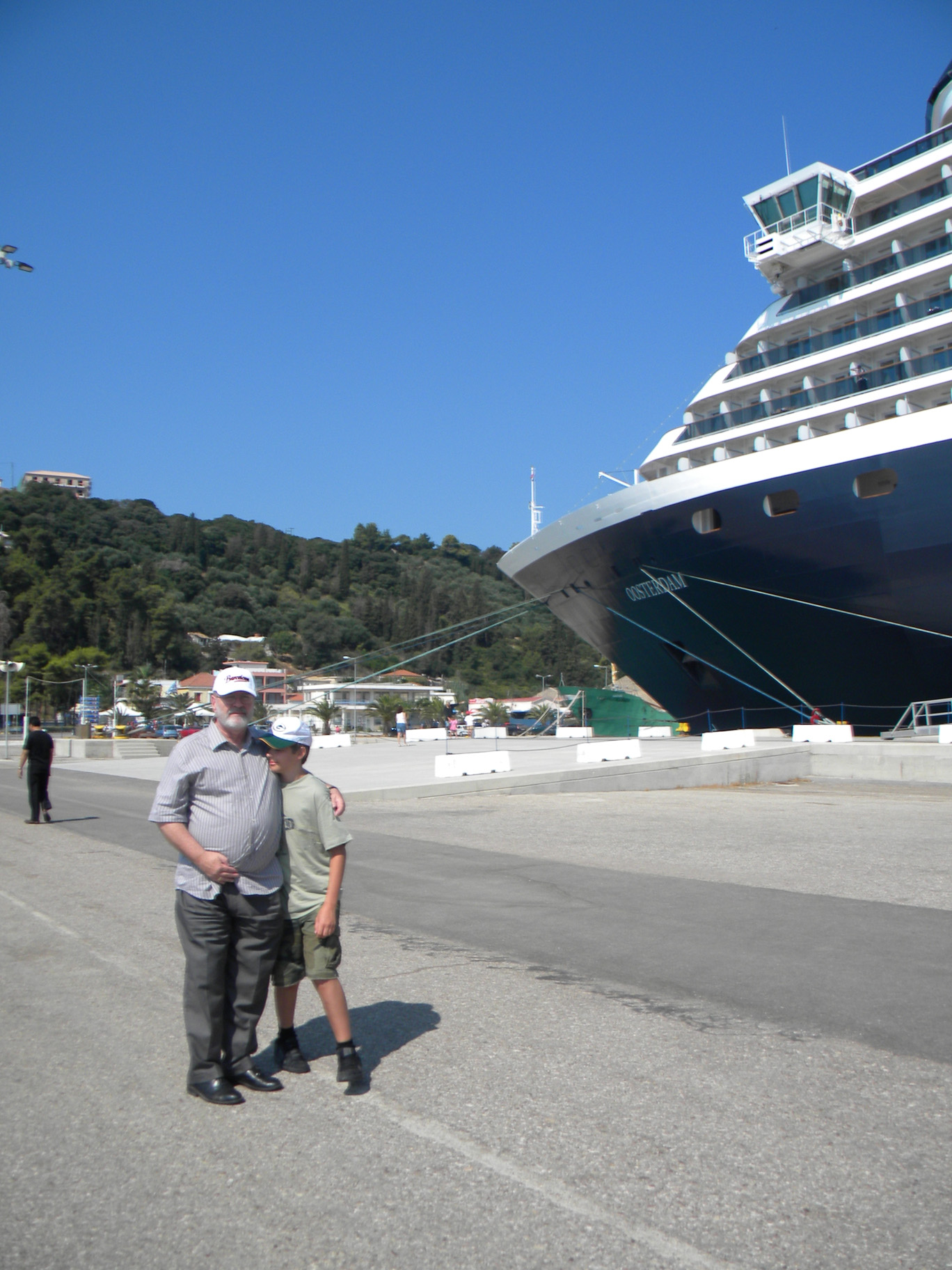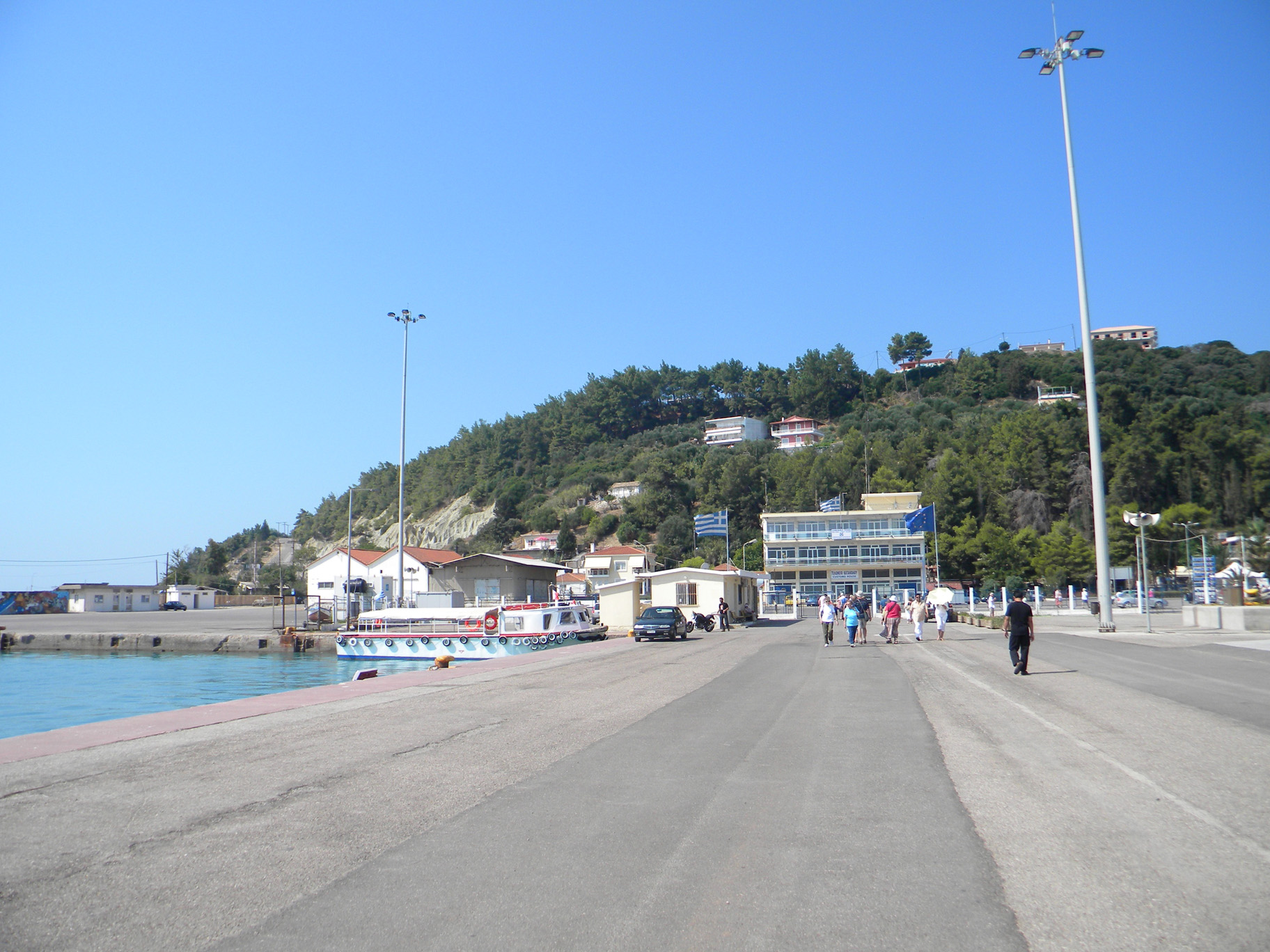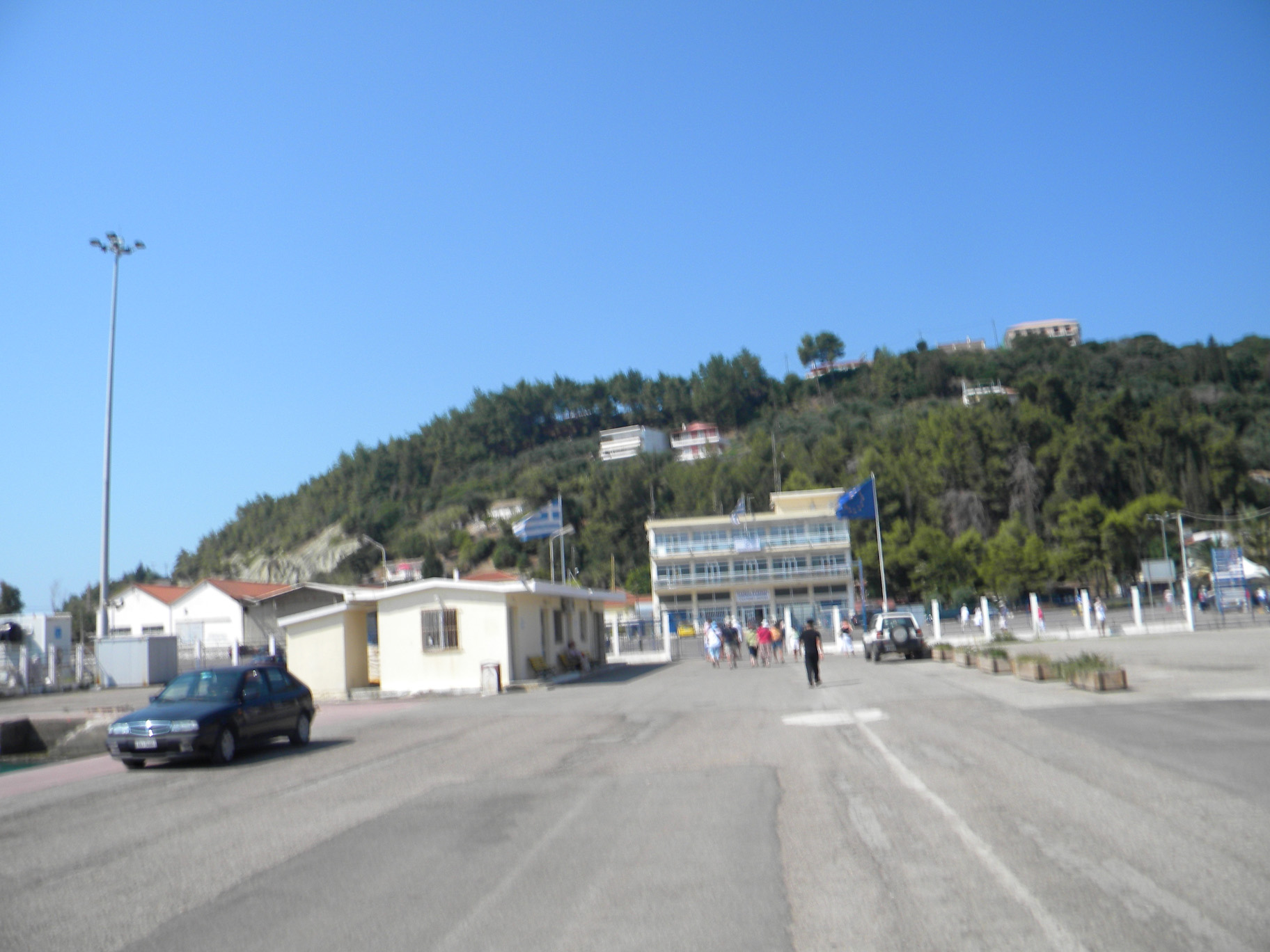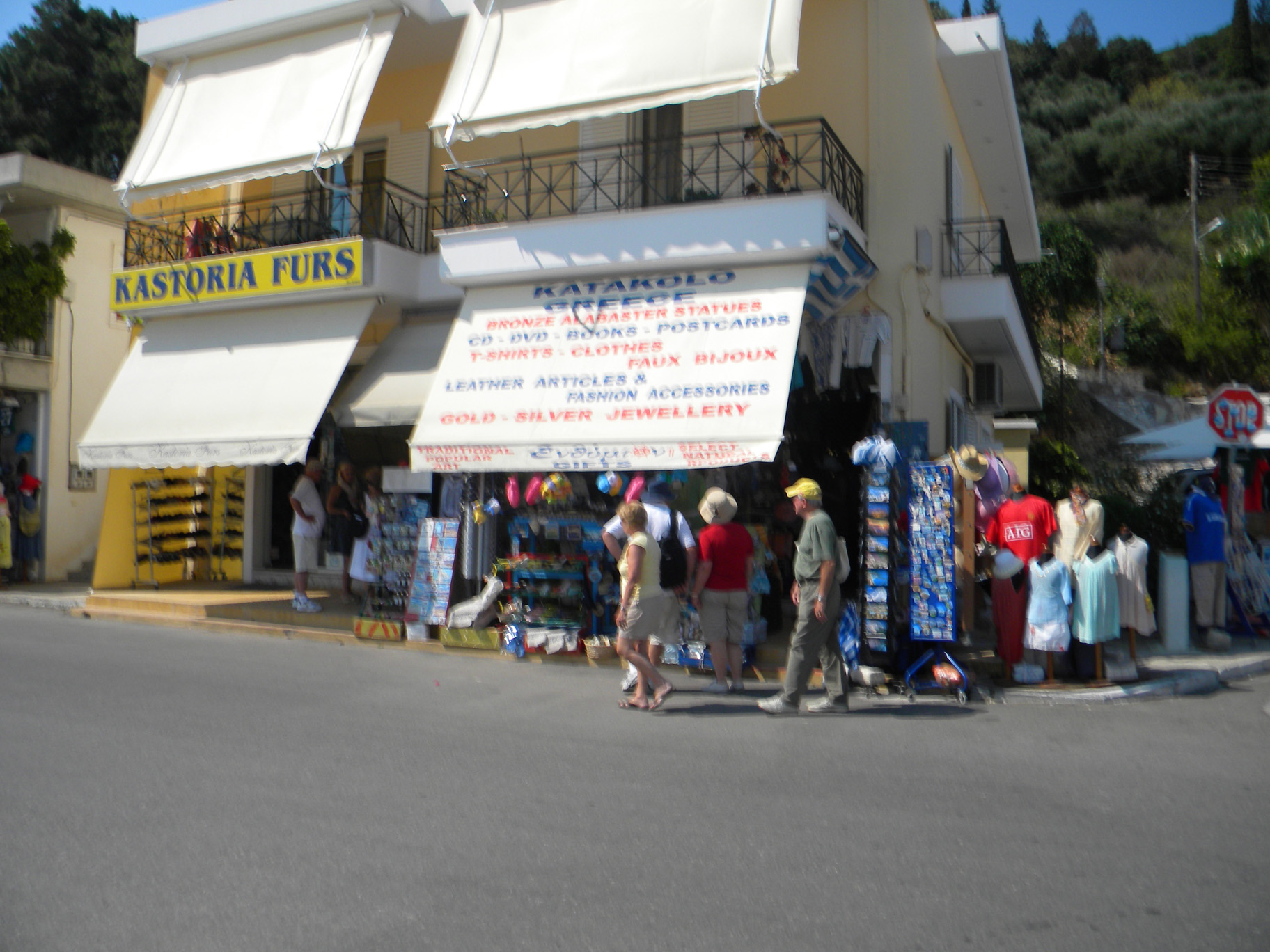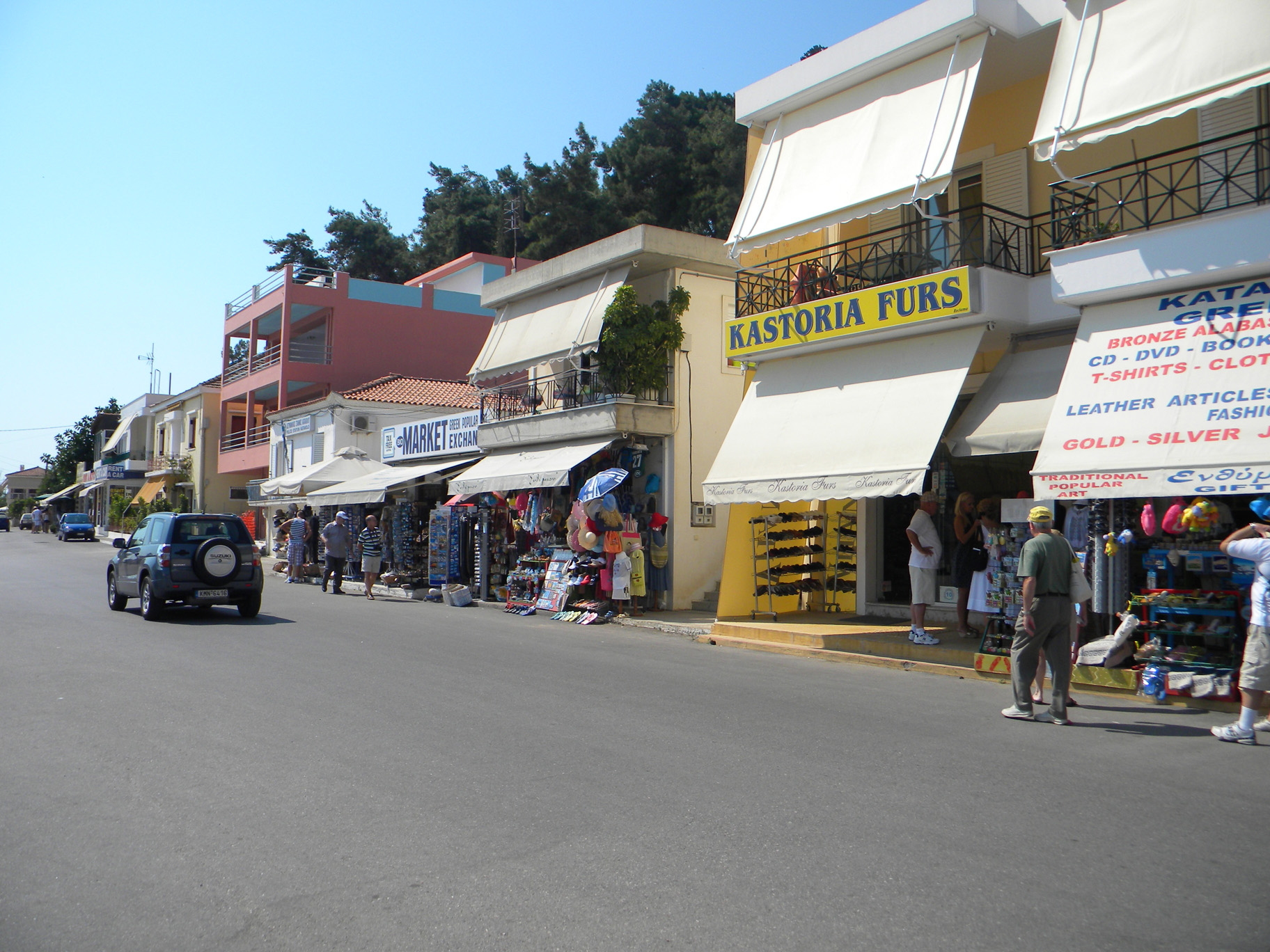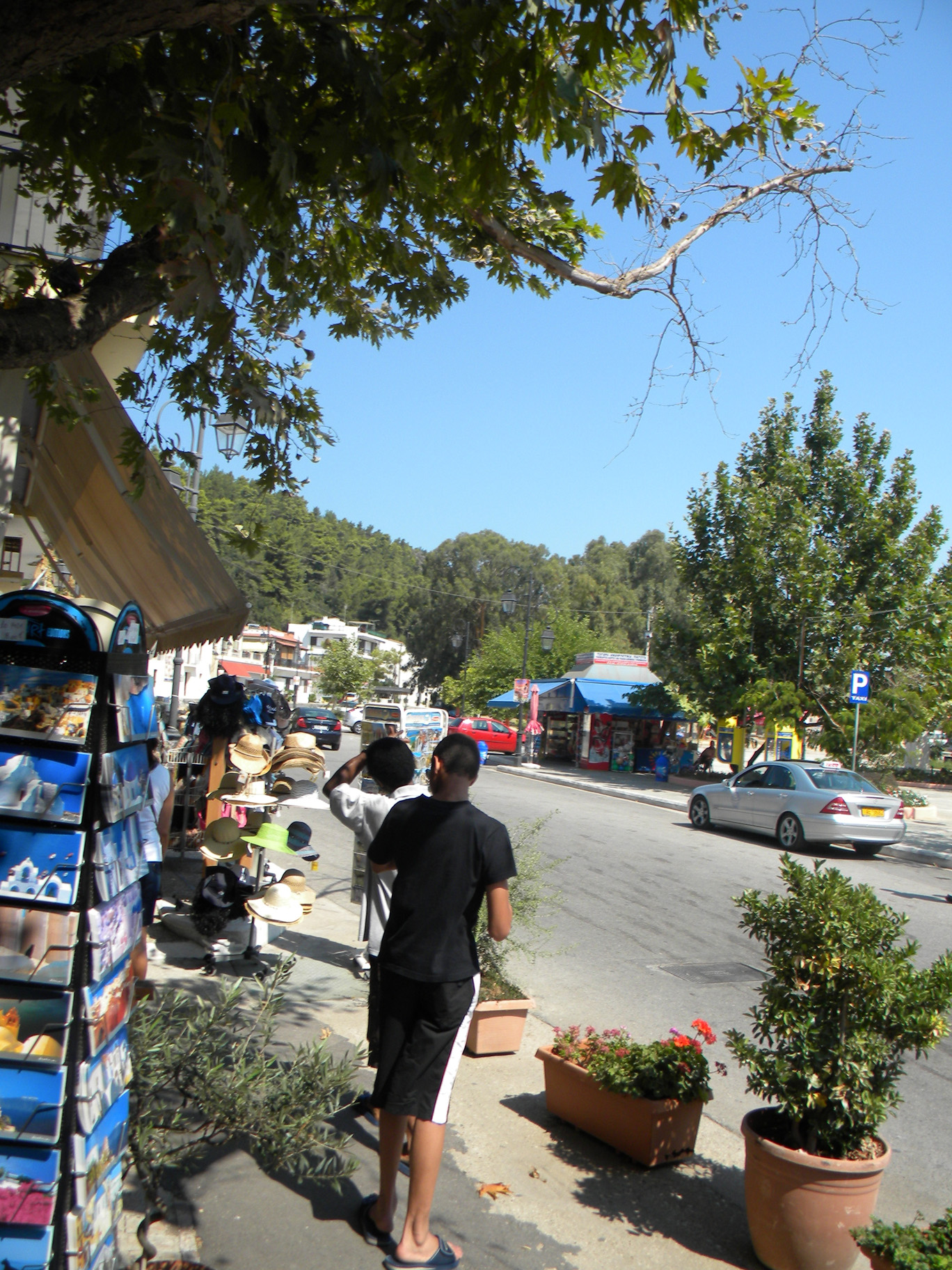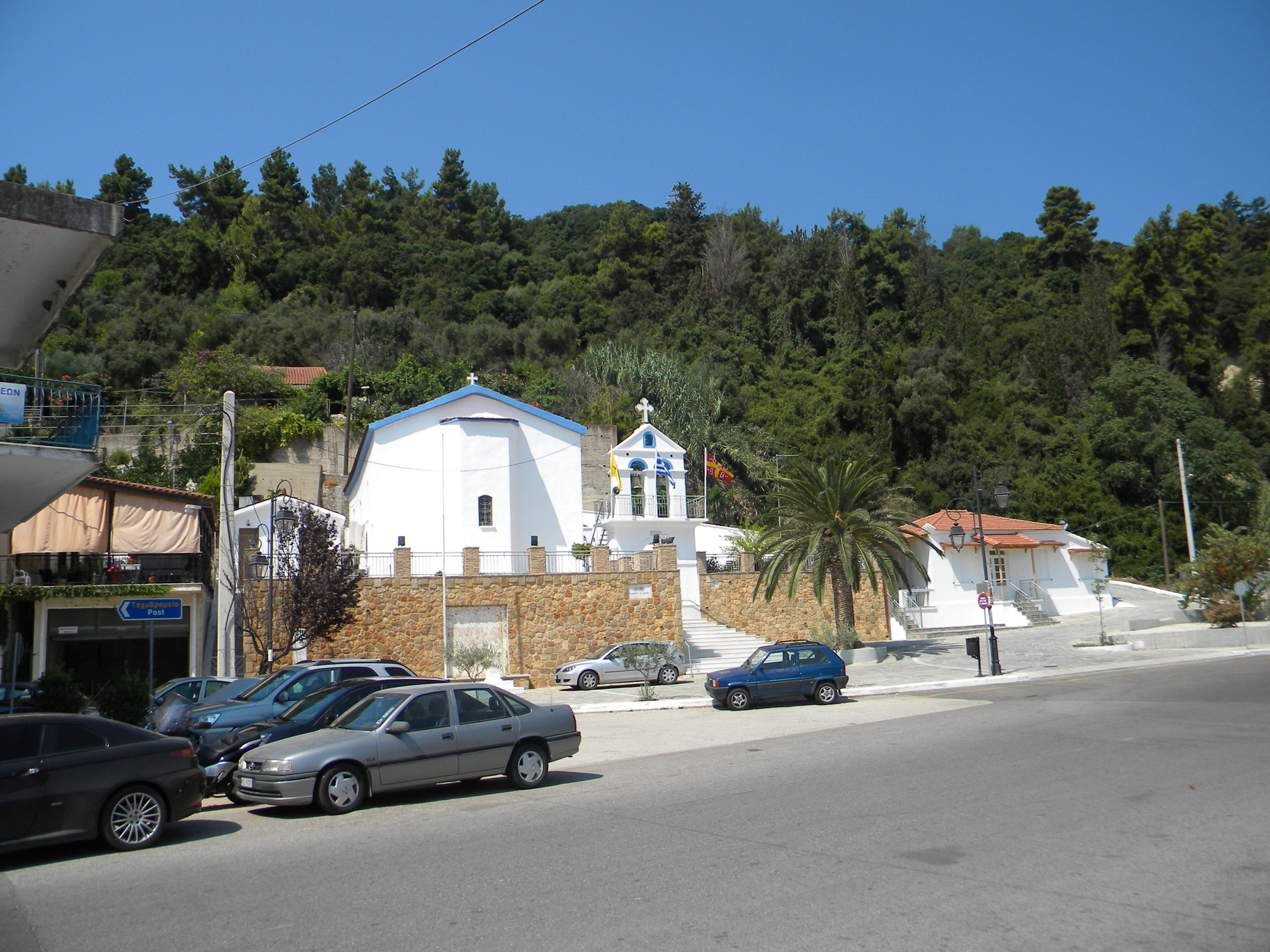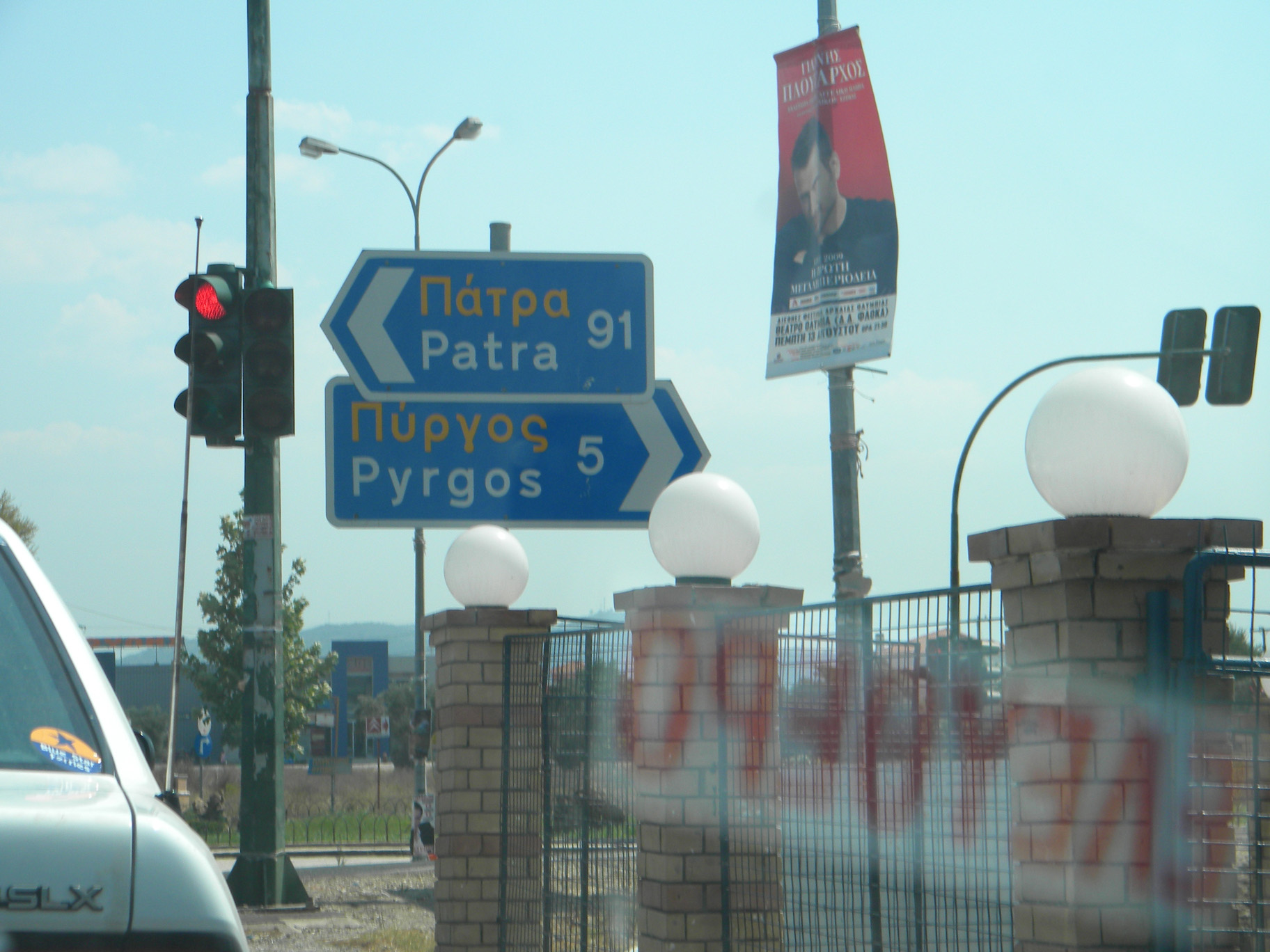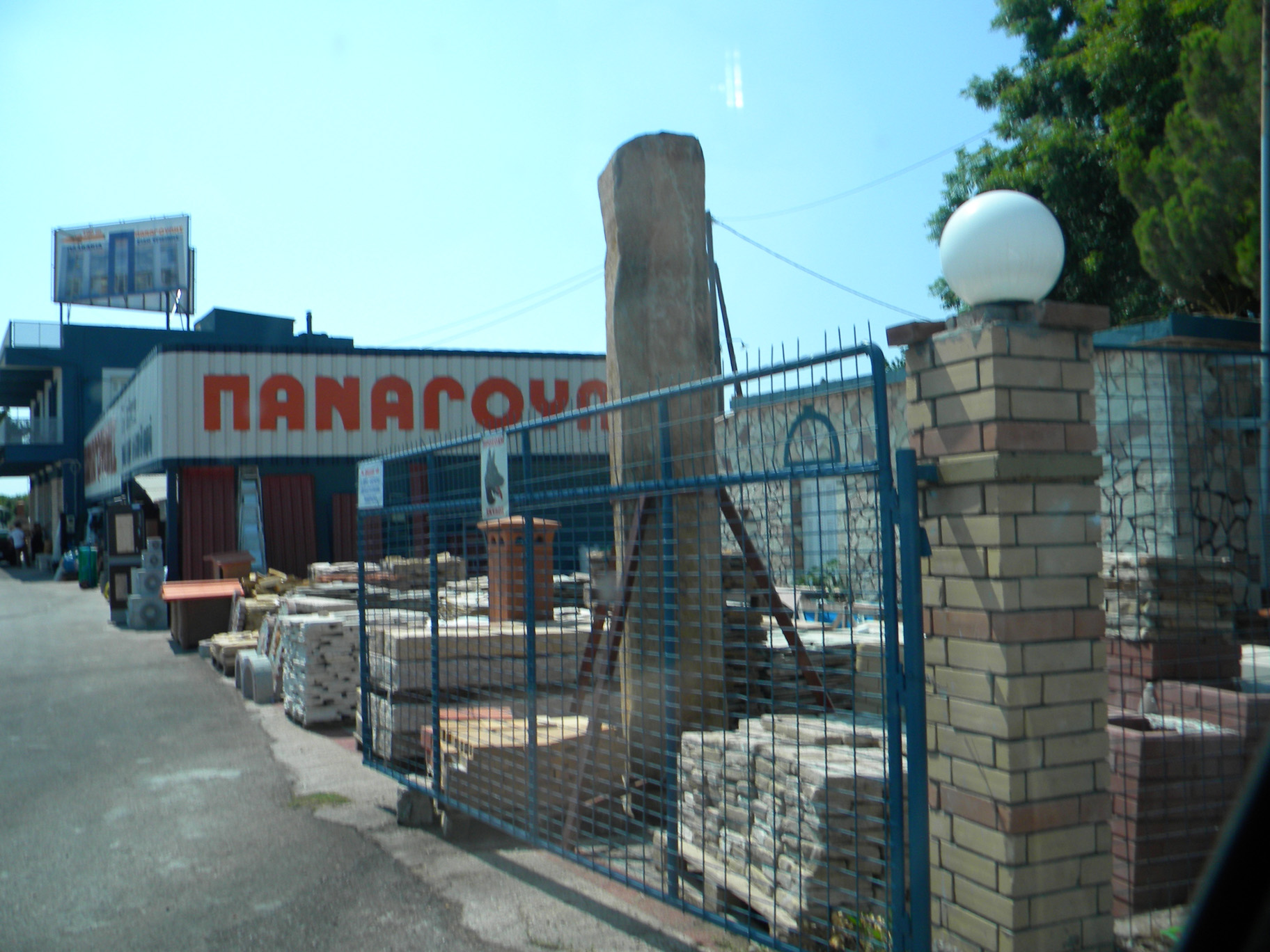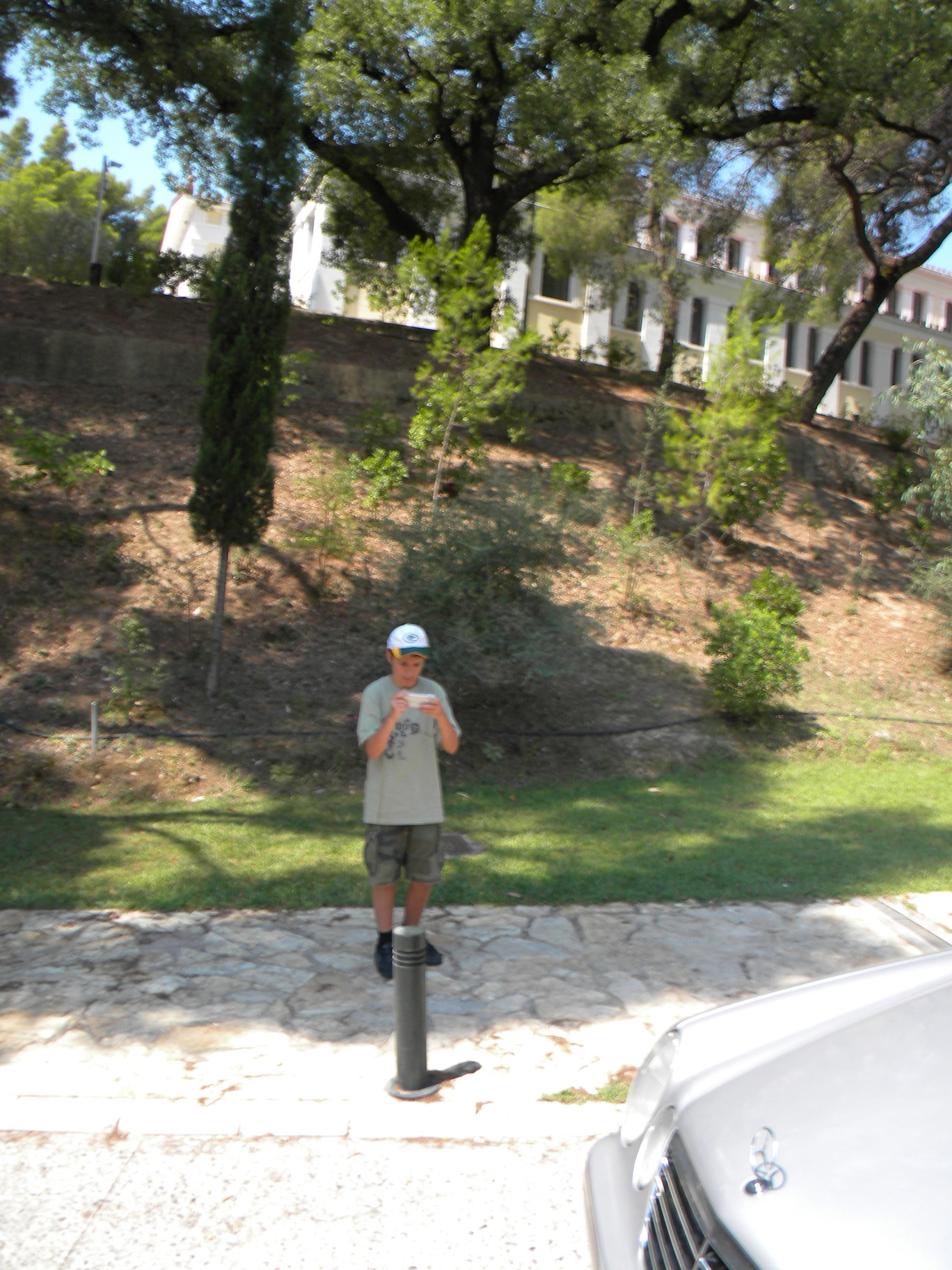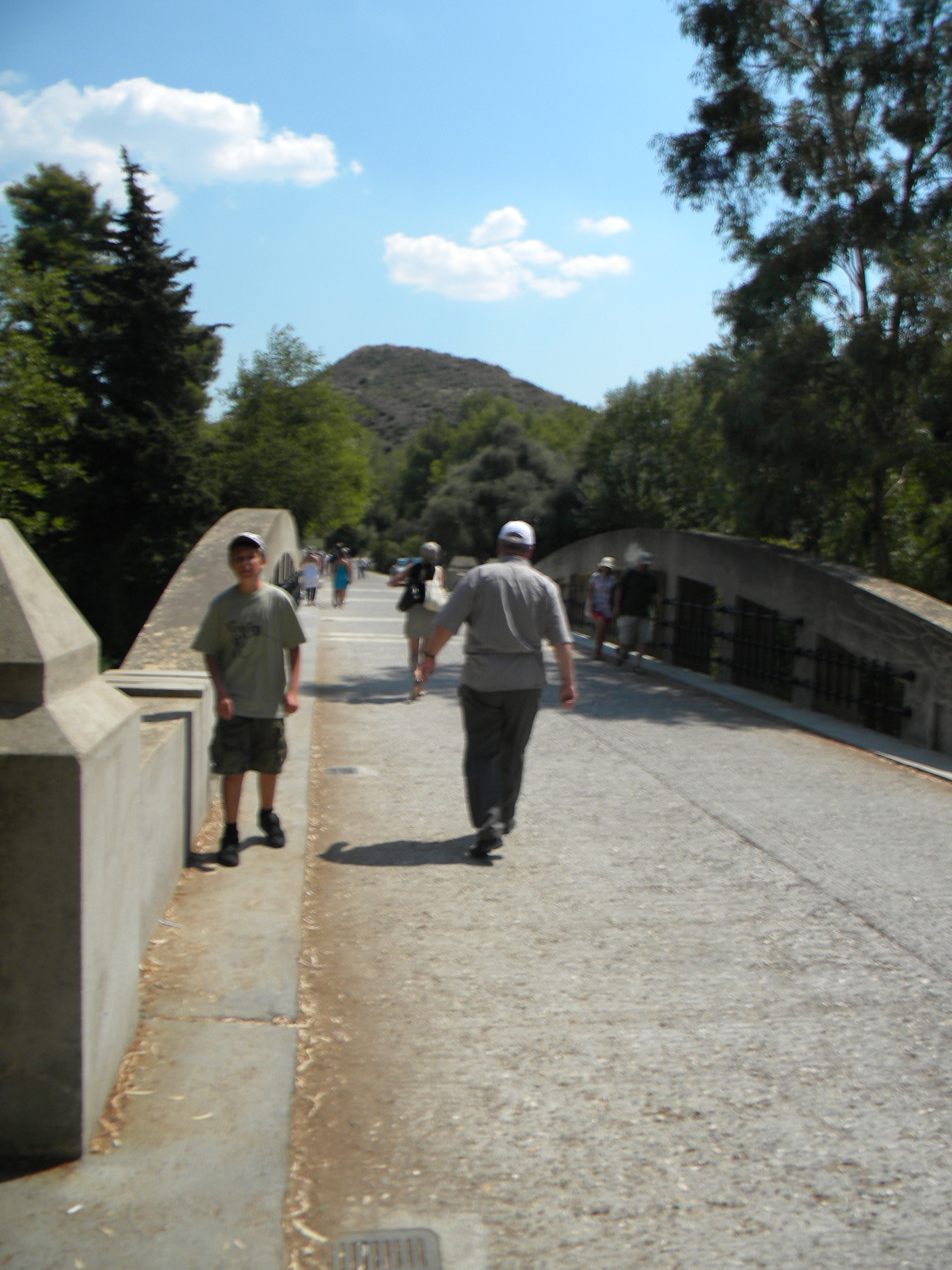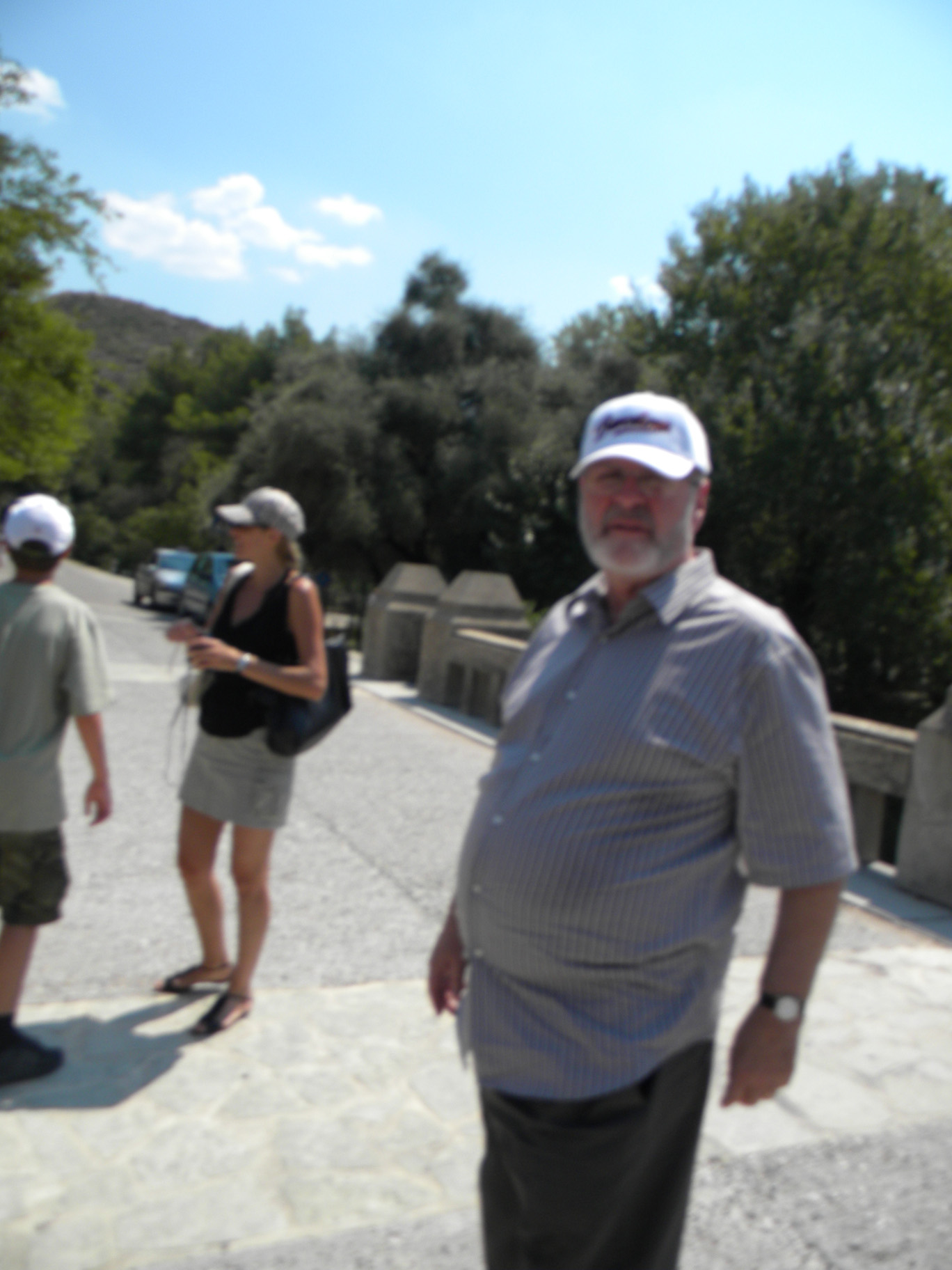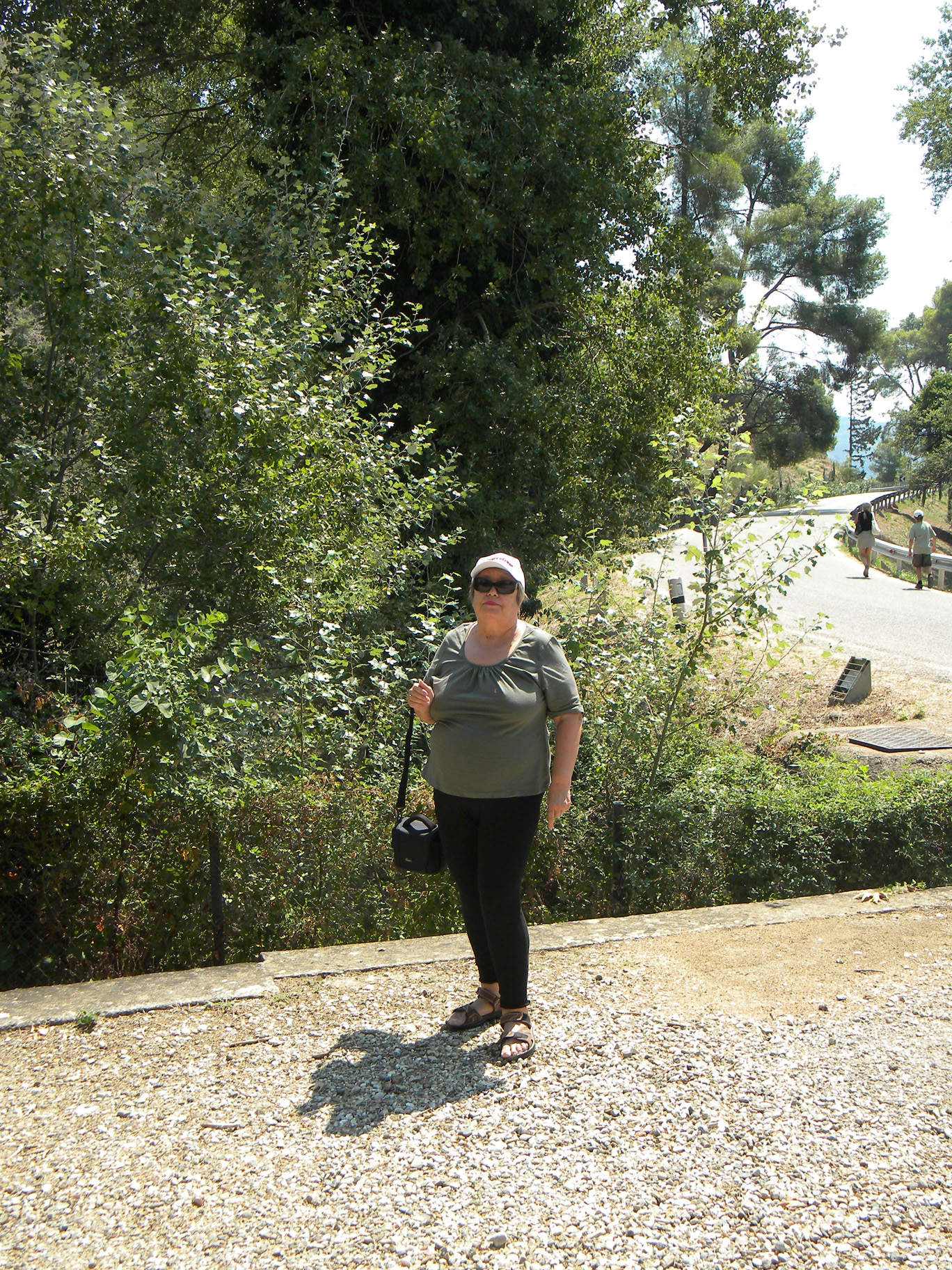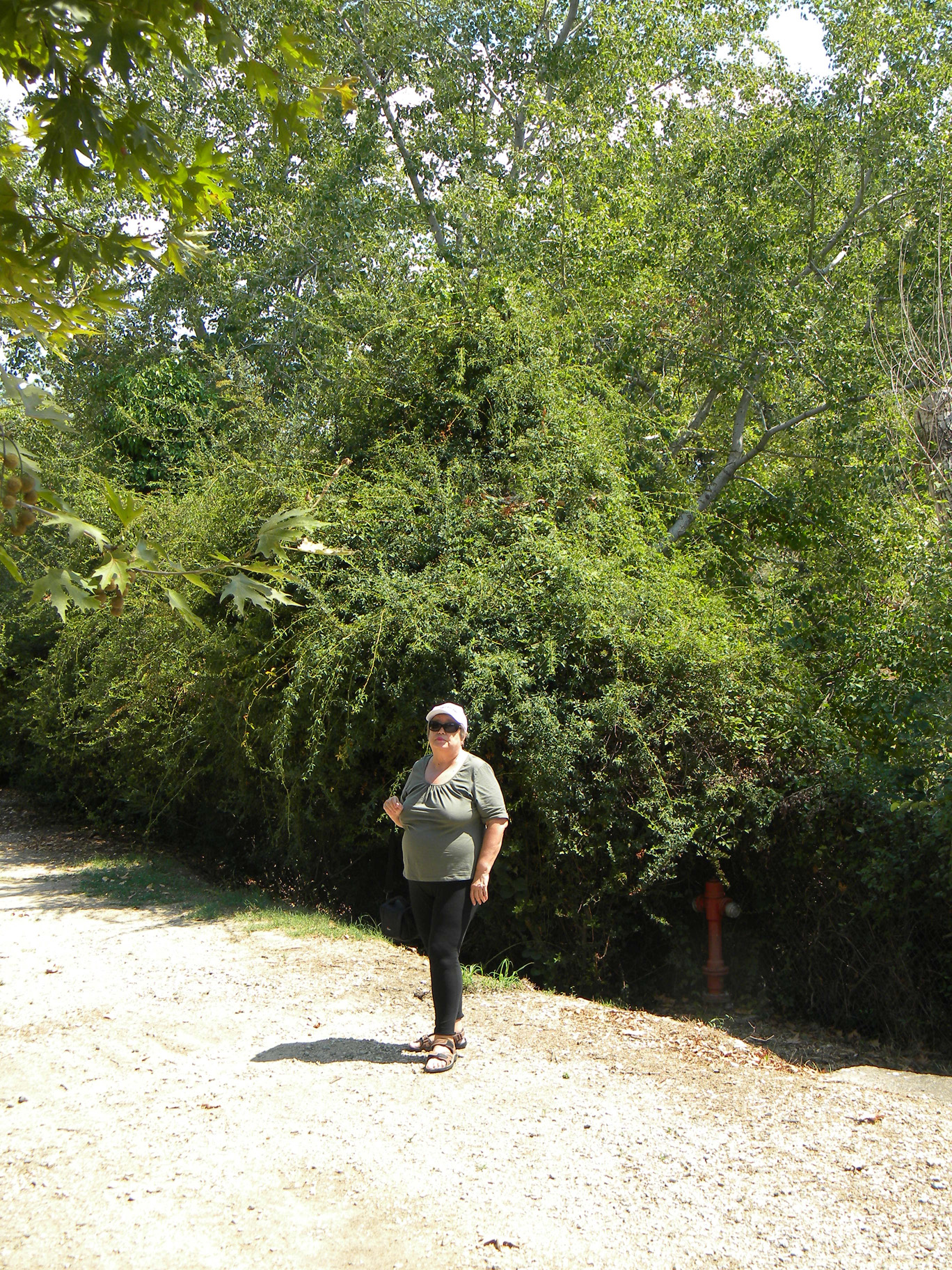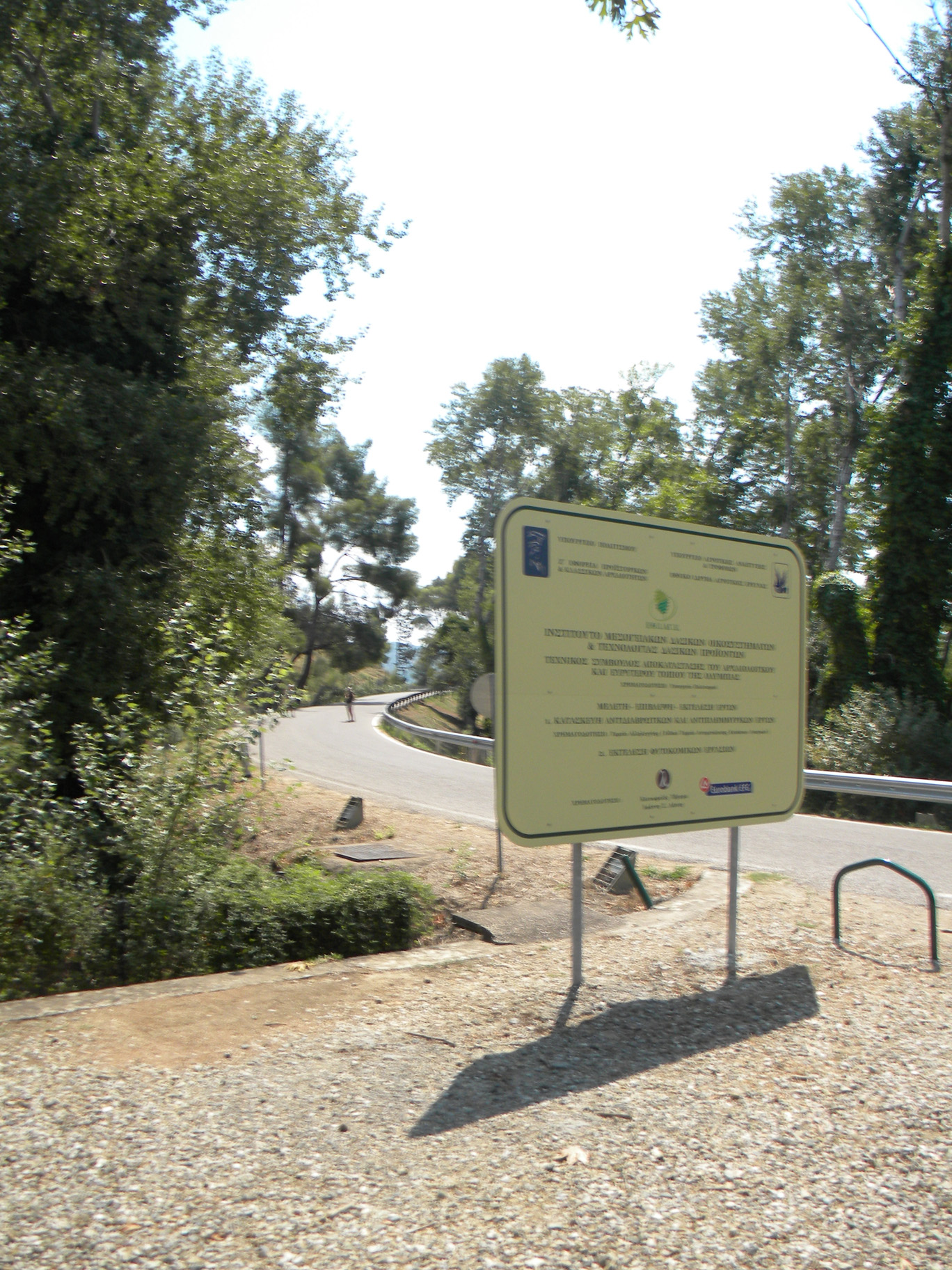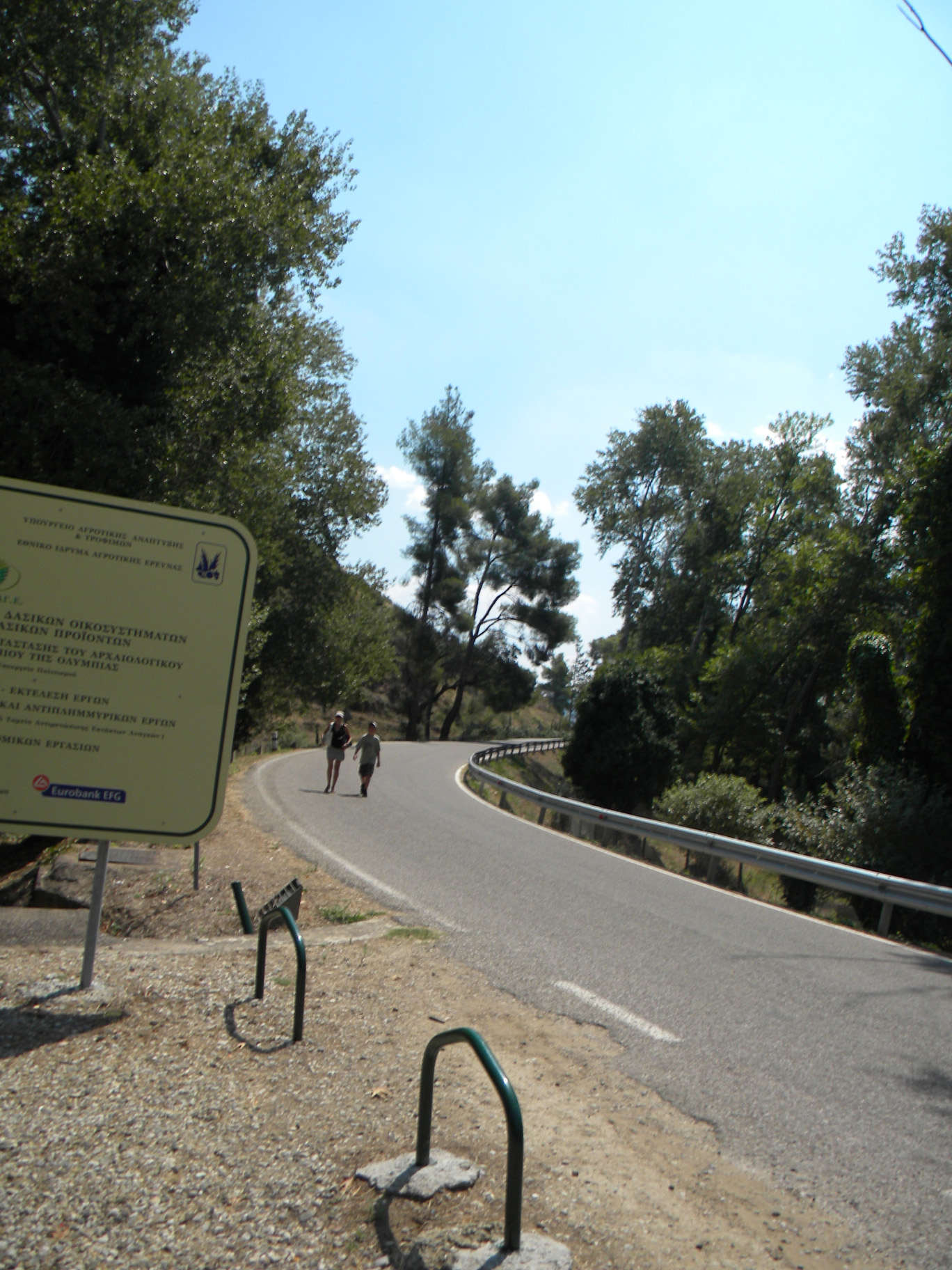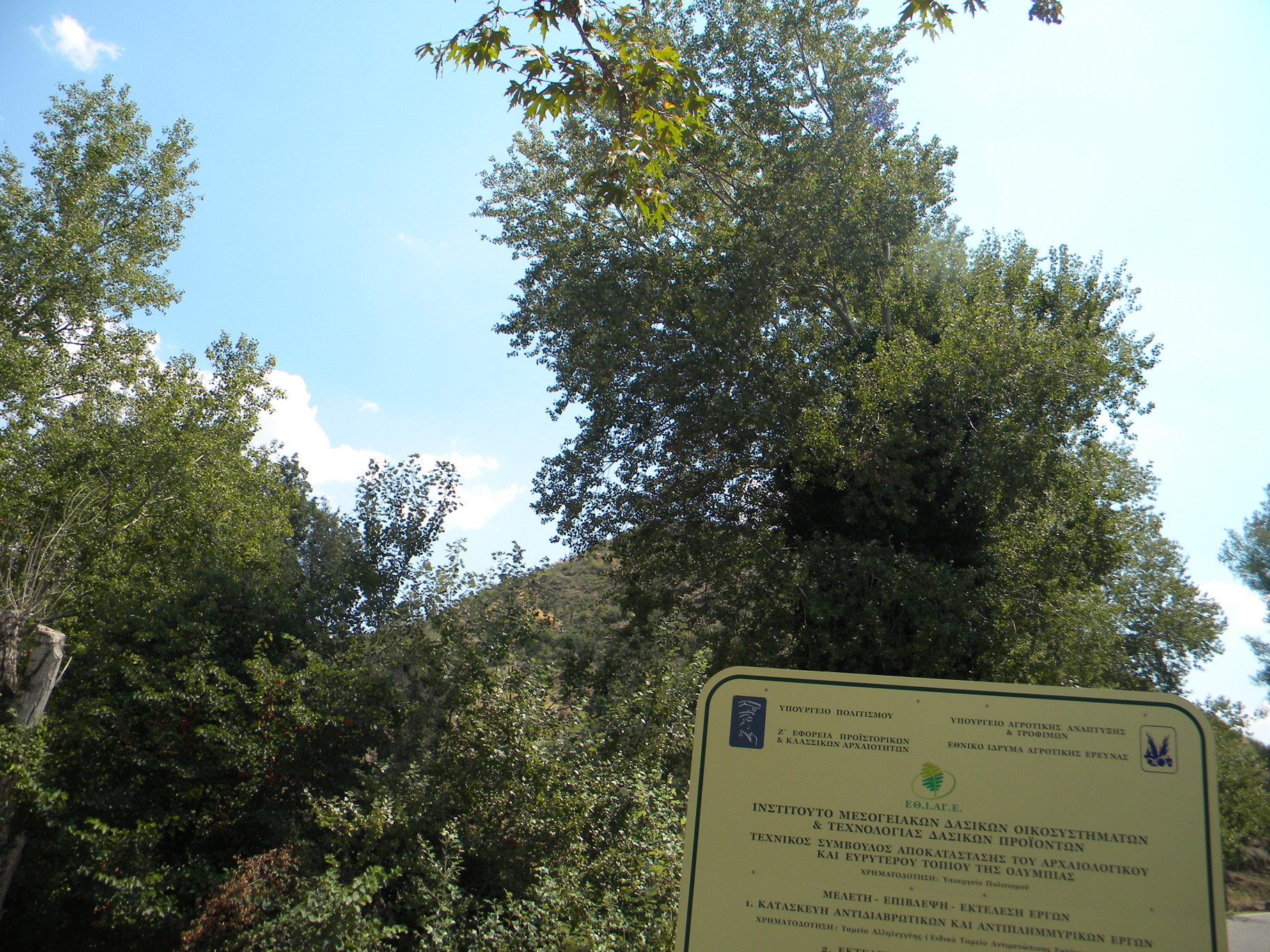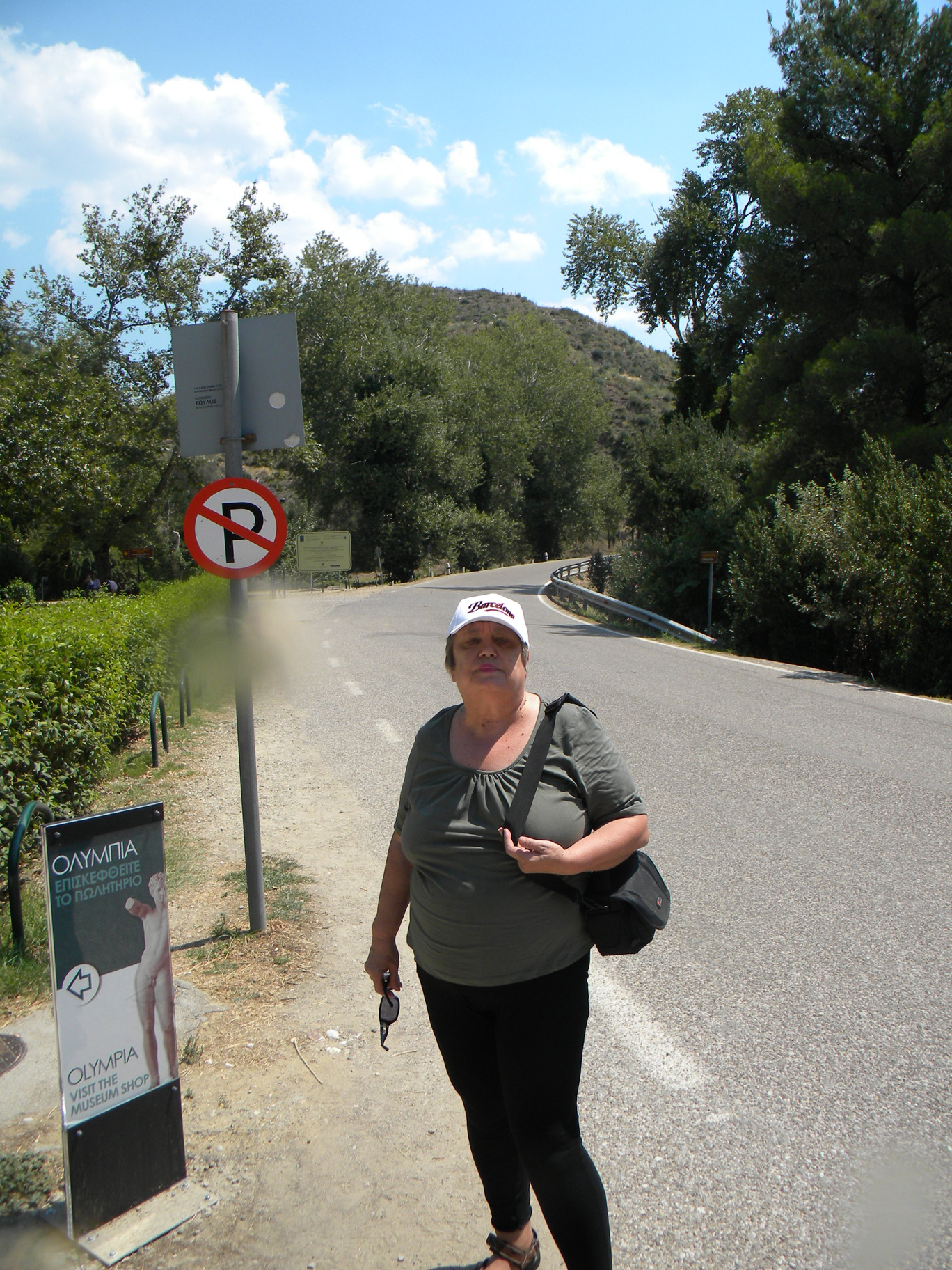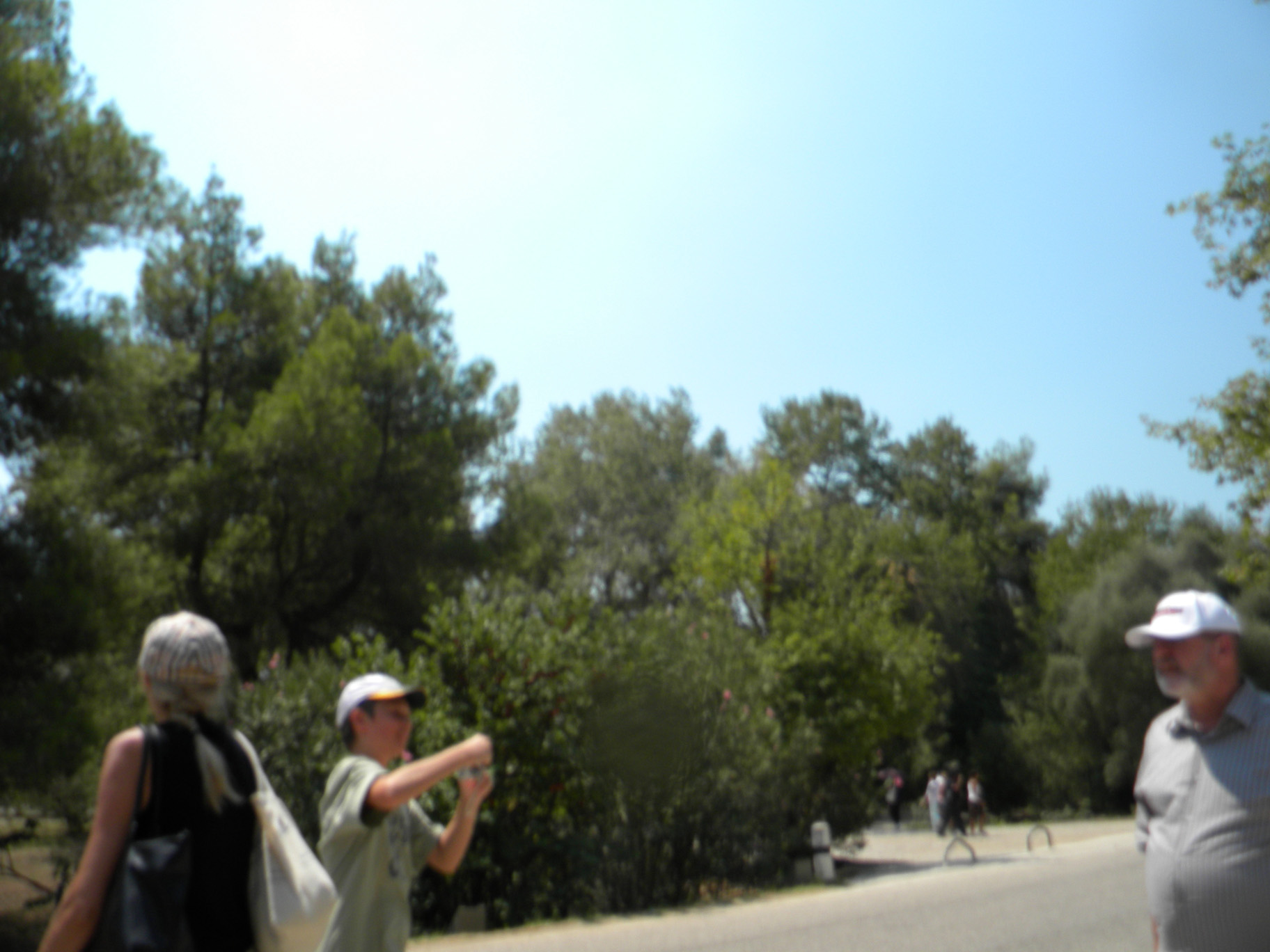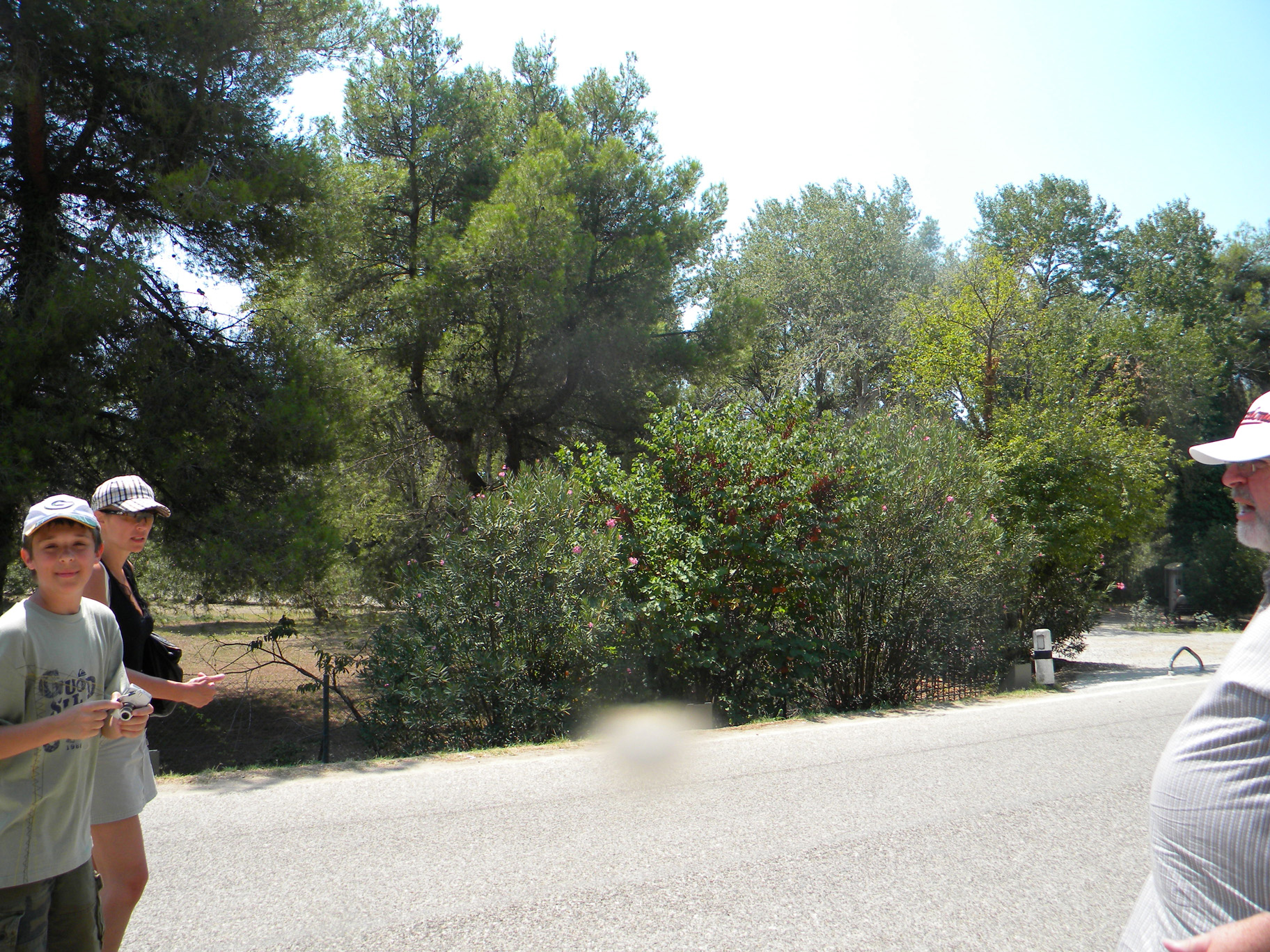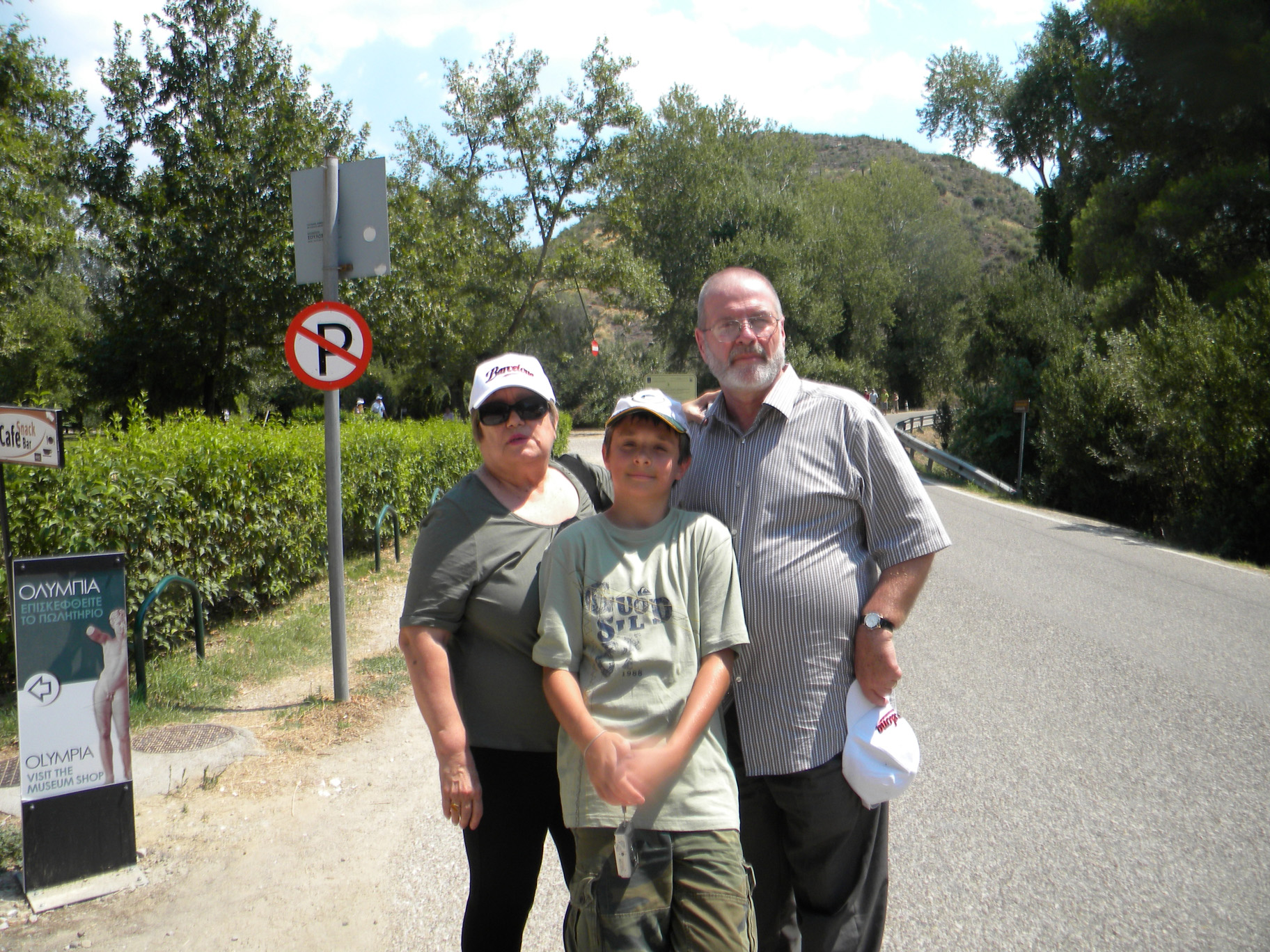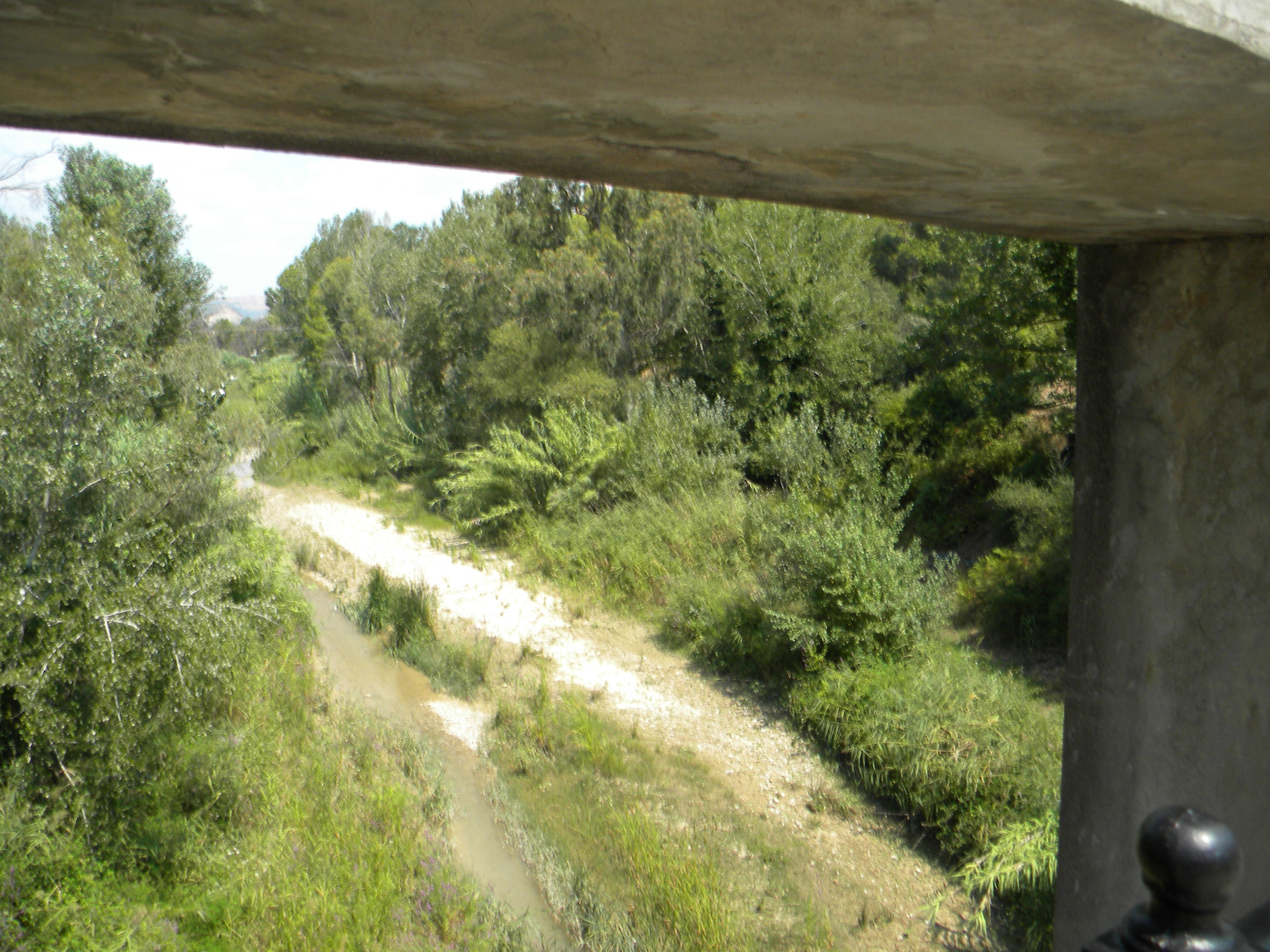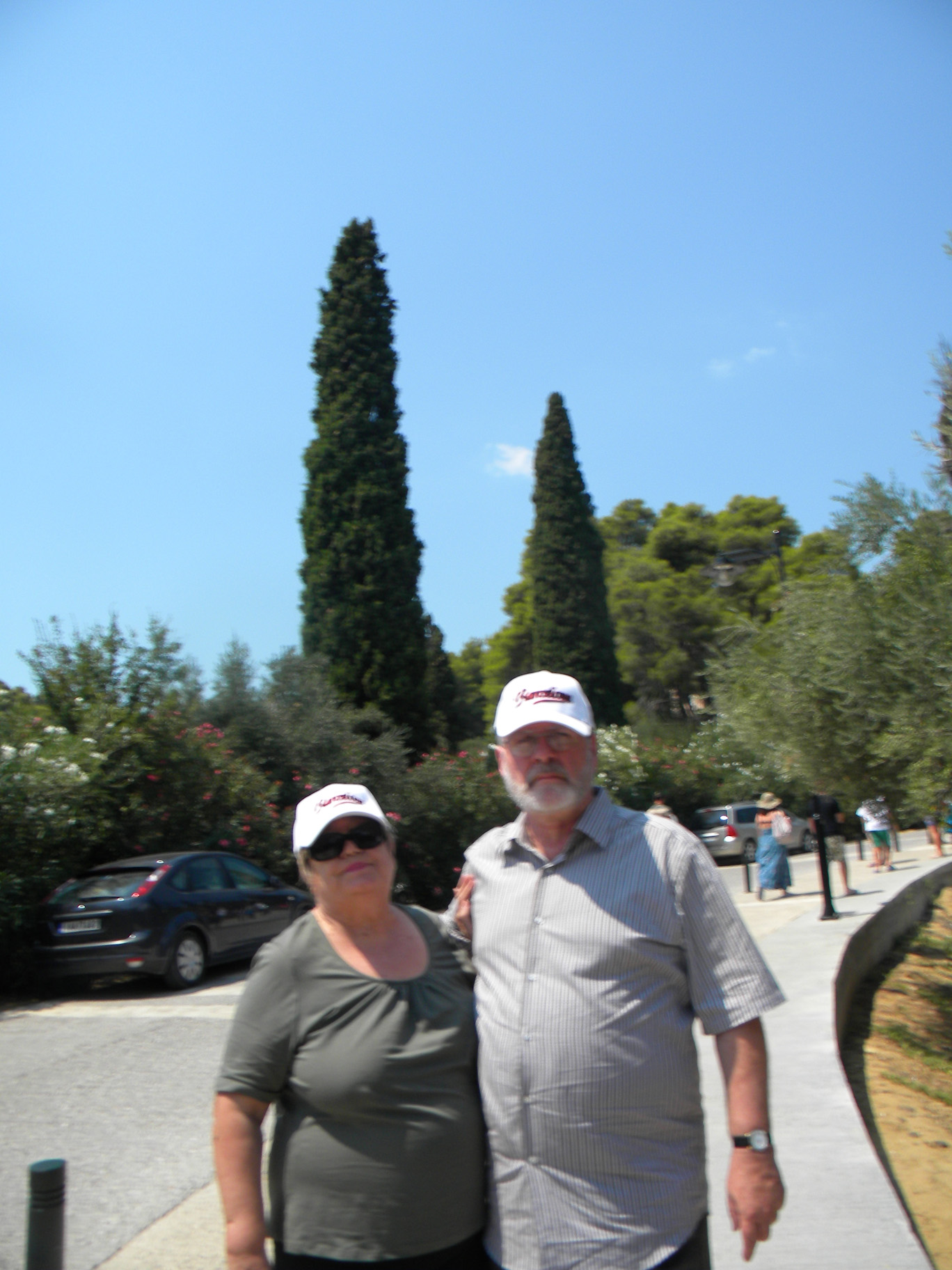KATAKOLON, GREECE
Peloponnese Historic fact and legend are both rich. Near Navplion, on the eastern side, the remains of Mycenae recall the tragic King Agamemnon, who once ruled from his palace (“Euripides” Oresteia tells of the tragic king). Among the most impressive Peloponnese sites, the Temple of Zeus at Olympia was counted as one of the Seven Wonders of the Ancient World. 
KATAKOLON is tiny – especially by Greek standards. Rail links it with the Western Peloponnese coast and Athens, but it is a fairly quiet village in the ancient district of Pheia(Fia). Facing the Bay of Agios Andreas, the remains of a Villehardouins fortress, Pontikokastro (“mouse castle”) crown its seaside hilltop. The road continues to the village of Skafida where there is a monastery of the same name. A Venetian tower (1686), rises above the monastery garden.
Larger Pirgos, between Katakolon and Olympia, is capital of the Eleia prefecture. We are heading for Olympia, the expansive ruins of which are situated in 25 km from Katakolon. The taxi driver gave 1-hour waiting time and we are wondering about the area taking photos everywhere. We might believe the Gods themselves participated in the various sporting contests. We noticed the enormous pillar bases that are strewn around the Temple of Zeus. We walked along the Stadium to appreciate its size. Its seating capacity accommodated 40,000 spectators.
According to legend, the western Peloponnese was Pisan domain, Oinomaus was King, and his daughter, Hippodameia, married Pelops (of the rival kingdom). There are indications that by 1000 BC, ritualistic games were already being held in honor of the union. The event only involved local competitors at first, but gradually other city-states joined. By 776 BC, Eleian leader Iphitos rededicated the games to honor Zeus, opening the first Olympiad.
The original Olympic Games consisted of a footrace, wrestling, the pankration (“no holds” martial art – the game ended in submission, knockout or death), the pentathlon (discus, javelin, jumping, running and wrestling, chariot-racing and horse-racing. The victorious athlete was awarded a crown fashioned from wild olive branches. The branches were always cut from the same sacred tree, the Kallistefano. “Well done, glorious victor,” chanted the crowd in unison to signify praise for the winner.
There were artistic and literary competitions too. The ritual ended in 393 when Theodosios I set a moratorium.
The games were revived 15 centuries later (1896) by French historian Pier de Coubertin. A torch-bearer like the ancient heralds sets out from Olympia every four years to bear a flame to the games. To oversee the games, the International Olympic Academy with headquarters in Olympia, was founded in 1961.
Olympia was not a “regular” village, but a holy place. Only priests were allowed to live in the city – even the privileged classes were restricted within the complex.
The masterpiece of Doric style Temple of Zeus, built in 472 BC, was one of the Seven Wonders of the Ancient World. Pheidias’ gold and ivory statue of Zeus stood inside the temple. Outside the sacred grove of the Altis are other ruins.
Watch the slide show KATAKOLON, OLYMPIA, GREECE.
ANECDOTE # 12.
After our travelling around Katakolon we met with Gleb’s shipmate Vovka. I asked him: “What were you doing with your parents this afternoon?”
“We walked a little bit in the town and then went to the local beach,” answered Vovka.
“Was the Skafidhia beach clean and pleasant?” I asked.
“No, responded Vovka, “there were empty bottles around and dirt, and when we were swimming, too many stones were at the bottom and small fish were biting us as if we were strangers in their waters.”
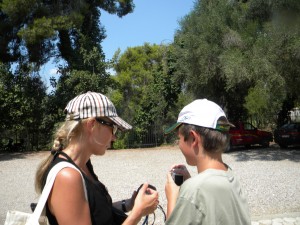 “O’ kay, Vovka,” I finished my questions quickly.
“O’ kay, Vovka,” I finished my questions quickly.
ANECDOTE # 13.
Every morning when we are coming to have breakfast to the Lido restaurant the Indonesian waiter Ashari always asks about Gleb “When is he coming? And what is he doing right now?”
Their friendship began when Gleb put to him a few questions about the ship “Oosterdam”, amount of people which a lifeboat can capacitate, technical details of the ship. And young Indonesian guy tried to satisfy Gleb’s curiosity, he drew pictures just on the napkins with the ball pen.
27 year- old Ashari left his wife and daughter of 5 y.o. at home in c. Jakarta and himself is making living as a ship steward working hard 11 hours a day, 7 days a week, 9 months at a row. After 3 months’ leave he comes back either to this ship or another one, and like this already 9 years. He is happy to have this job because back at home they stand in line to get any job to survive. 3 years college training in culinary arts and in hospitality industry was before he was accepted, every so often the upgrade and tests are held.
